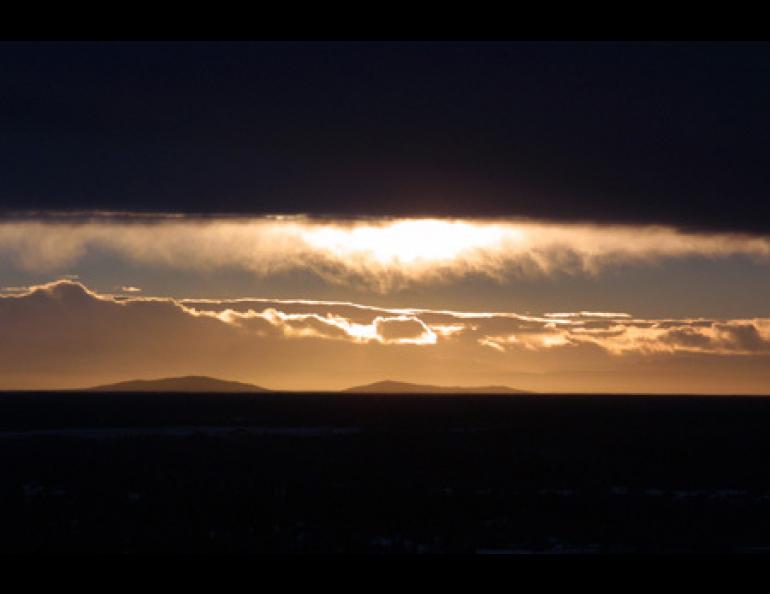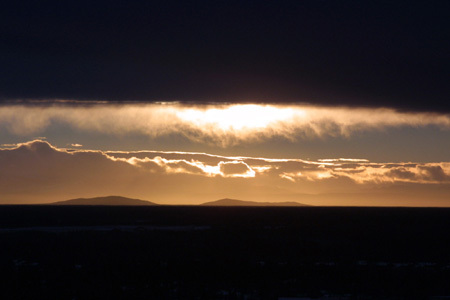
Alaska Weather to be Digested Differently
Alaska weather geeks, including me, will soon have more to gawk at. The state’s offices of the National Weather Service are switching to a new communication system that will someday allow people to check forecasts for their specific neighborhood or village.
Forecasters at weather service offices in Juneau, Anchorage and Fairbanks have started to use a computer database that divides Alaska’s 912,597 square kilometers into individual boxes about three-to-five kilometers on a side. As soon as the bugs are worked out of the system, Alaskans will be able to select specific areas of the state and get detailed forecasts.
“Say you want to go hunting 70 miles west of Iliamna and you want to know what the weather will be like in two days,” said Eric Stevens of the NWS office in Fairbanks. “Instead of settling for a generalized forecast for the entire region around Iliamna, you could click on a point on the map, and boom, there’s your customized information. We have the potential to forecast for every 5-kilometer ‘neighborhood’ in Alaska.”
A few weeks ago, Stevens and his colleagues at the Fairbanks office changed to the “Interactive Forecast Preparation System,” now in use by the National Weather Service nationwide. The new system divides Alaska into fine grids and allows forecasters to add localized information that affects weather, such as the slope direction of hills.
The new system allows weather service forecasters to produce maps of Alaska color-coded for temperature, wind speed, chance of precipitation and other weather variables, such as the size of waves expected on the open ocean. The Juneau office of the National Weather Service currently offers experimental versions of those maps at http://pajk.arh.noaa.gov/fcstgrids.php, and the Fairbanks and Anchorage offices should have the graphical information available for the remainder of Alaska and its surrounding waters by the end of summer 2004, Stevens said.
While the weather service’s method of communicating the weather is changing, the way forecasters predict the weather remains the same. To develop a forecast, they use satellite and radar images of Alaska, ground and weather balloon measurements, and computer models. To issue long-range forecasts that extend seven days, forecasters depend on computer models that provide simulations of Earth’s weather from real-life inputs, such as information on temperatures and wind speeds from weather balloons. Taking this data on the current state of the atmosphere, computers crunch millions of numbers and, accounting for the laws of physics, give possible solutions for the future weather situation. While the models alone do a poor job of forecasting the weather, forecasters use the other tools at their disposal to make detailed seven-day predictions, which they update as conditions change.
Besides considering the output of a few high-power computer models, forecasters use three other main methods to predict the weather, Stevens said. The first is observing the current weather and estimating how long it will persist. Another is climatology—looking at historical records for Alaska and seeing the temperatures of certain days in the past and finding a range that might be accurate. The most important element is human experience, Stevens said. When a forecaster has predicted weather in an area for 20 years, he or she knows the meteorological quirks of the place and how best to interpret information from computer models and other sources.





